درباره DIVA-GIS
DIVA-GIS یک برنامه کامپیوتری رایگان برای نقشه برداری و تجزیه و تحلیل داده های جغرافیایی (یک سیستم اطلاعات جغرافیایی ( GIS ) است. با DIVA-GIS می توانید نقشه هایی از جهان یا یک منطقه بسیار کوچک، برای مثال، با استفاده از مرزهای ایالت، تهیه کنید. رودخانهها، تصویر ماهوارهای و مکانهای مکانهایی که گونههای جانوری در آنها مشاهده شده است. همچنین دادههای مکانی رایگان برای کل جهان ارائه میکنیم که میتوانید در DIVA-GIS یا برنامههای دیگر استفاده کنید.
DIVA-GIS به ویژه برای نقشه برداری و تجزیه و تحلیل داده های تنوع زیستی، مانند توزیع گونه ها، یا دیگر “توزیع های نقطه ای” مفید است. این فرمت های استاندارد داده مانند فایل های شکل ESRI را می خواند و می نویسد، بنابراین قابلیت همکاری مشکلی ندارد. DIVA-GIS فقط روی ویندوز اجرا می شود.
شما می توانید از این برنامه برای تجزیه و تحلیل داده ها استفاده کنید، به عنوان مثال با ساختن نقشه های شبکه ای (شتری) از توزیع تنوع زیستی، برای یافتن مناطقی که دارای سطوح تنوع بالا، پایین یا مکمل هستند. و همچنین می توانید داده های آب و هوا را نقشه برداری و پرس و جو کنید. شما می توانید توزیع گونه ها را با استفاده از مدل های BIOCLIM یا DOMAIN پیش بینی کنید.
نرم افزار مدل سازی توزیع گونه ها
آیا به نرمافزار بهتری برای مدلسازی توزیع گونهها (مدلسازی طاقچه اکولوژیکی؛ مدلسازی پوشش آب و هوا) علاقه دارید؟ DIVA-GIS برخی از عملکردها را ارائه می دهد که به ویژه برای یادگیری نحوه کارکرد آن مفید است.
برای روشهای پیشرفتهتر، میتوانید بسته dismo را در R امتحان کنید . برای مقدمه به مدلسازی توزیع گونهها با R vignette مراجعه کنید.
و در صورت تمایل می توانید نتایج را در DIVA-GIS نمایش دهید…

پارامترهای طرح ریزی آسان شده است
در اینجا یک وب سایت وجود دارد که دریافت توضیحات سیستم مرجع مختصات proj4 را که اکنون DIVA-GIS استفاده می کند، آسان می کند.
ابتدا طرح مورد نظر خود را با مرور یا جستجو در هر یک از لیست ها (EPSG، ESRI، …) پیدا کنید. اگر یکی را انتخاب کرده اید، روی پیوند “Proj4” در کادر خاکستری کلیک کنید.
برای مثال، روی پیوند ارجاعات ESRI کلیک کنید . “Robinson” را جستجو کنید، “World Robinson” را انتخاب کنید و روی پیوند Proj4 کلیک کنید تا به دست آورید:
DIVA در مک
اکنون اجرای DIVA-GIS بر روی مک (OSX) با تراشه اینتل بسیار آسان است. این به این دلیل است که مایک کروننبرگ DIVA را به “پیشوندهای از پیش تعریف شده” اضافه کرده است .
ابتدا winebottler را دانلود، نصب و باز کنید . سپس بر روی DIVA-GIS (در زیر منوی پیشوندهای از پیش تعریف شده) کلیک کنید.
اگر نمیخواهید از پیشوند از پیش تعریفشده استفاده کنید (یا اگر میخواهید نسخه دیگری از نسخه موجود در winebottler را نصب کنید)، به این صورت است که Mike آن را تنظیم میکند:
1. WineBottler را باز کنید
. 2. «ایجاد پیشوند سفارشی» را انتخاب کنید.
3. در بخش “نصب”، setup.exe را پیدا کنید
مشکل DBF
Shapefiles فرمت فایل غالبی است که برای داده های مکانی (از نوع “بردار”: نقاط، خطوط، چند ضلعی ها استفاده می شود. همه برنامه های GIS می توانند آنها را وارد کنند و بسیاری مانند DIVA-GIS مستقیماً از آنها استفاده می کنند. یک شکل فایل از چندین فایل تشکیل شده است: .shp، .shx، .dbf، و گاهی اوقات بیشتر. ویژگیها (سوابق دادهها) ویژگیهای فضایی در فایل dbf. ذخیره میشوند.
این راحت بود زیرا این فایلها را میتوان به راحتی با مایکروسافت اکسل – که روی اکثر رایانههای ویندوزی نصب میشود – ویرایش کرد. متأسفانه، در نسخه های اخیر اکسل (Office 2007) فقط می توانید یک فایل .dbf را باز کنید، اما نمی توانید آن را ذخیره کنید. این یک دردسر واقعی برای کاربران shapefile است.
DIVA ویرایش dbf ندارد. و این یک درد در برنامه هایی است که انجام می دهند (ArcMap). اکثر مردم درب پشتی اکسل را ترجیح می دهند.
مقالات پژوهشی با ذکر DIVA-GIS
این لیست بخشی از مقالاتی است که از DIVA-GIS استفاده کردهاند.
Adams, Dean C. and James O. Church, 2007. Amphibians do not follow Bergmann’s rule. Evolution 62-2: 413–420
Arif, Saad, Dean C. Adams and Jill A. Wicknick, 2007. Bioclimatic modelling, morphology, and behaviour reveal alternative mechanisms regulating the distributions of two parapatric salamander species. Evolutionary Ecology Research 9: 843–854.
Ben-David R, Abbo S, Berger JD., 2009. Stress gradients select for ecotype formation in Cicer judaicum Boiss., a wild relative of domesticated chickpea. Genetic Resources and Crop Evolution (in press).
Berger, JD, 2007. Ecogeographic and evolutionary approaches to improving adaptation of autumn-sown chickpea (Cicer arietinum L.) to terminal drought: the search for reproductive chilling tolerance. Field Crops Research 104: 112-122.
Berger JD, Adhikari K, Wilkinson D, Buirchell B, Sweetingham MW, 2008. Ecogeography of the old world lupins: 1) Ecotypic variation in yellow lupin (Lupinus luteus L.). Australian Journal of Agricultural Research 59: 691-701.
Berger JD, Ludwig C, and Buirchell B, 2008. Ecogeography of the old world lupins: 2) Characterizing the Habitat Range. In: JA Palta & JD Berger (eds.). Proceedings of the 12th International Lupin Conference, ‘Lupins for Health and Wealth’. Fremantle, Western Australia. p355-36.
Bonman, J. Michael, Harold E. Bockelman, Yue Jin, Robert J. Hijmans and Ann Inez N. Gironella, 2007. Geographic Distribution of Stem Rust Resistance in Wheat Landraces. Crop Science 47: 1955-1963.
Bourdeix, R., L. Guarino, P.N. Mathur and L. Baudouin, 2005. Mapping of coconut genetic diversity. In: Pons Batugal, V Ramanatha Rao and Jeffrey Oliver, editors. Coconut Genetic Resources. IPGRI. pp. 32-43
Byass, Peter, 2009. Epidemiology without borders: an anational view of global health. Global Health Action 2009. DOI: 10.3402/gha.v2i0.2052
Chapman, A.D. and J. Wieczorek (eds.), 2006. Guide to Best Practices for Georeferencing. Copenhagen: Global Biodiversity Information Facility.
Chen, Youhua and Junfeng Bi, 2007. Biogeography and hotspots of amphibian species of China: Implications to reserve selection and conservation. Current Science 92: 480-489.
Edwards, Erika J. and Michael J. Donoghue, 2006. Pereskia and the Origin of the Cactus Life-Form. The American Naturalist 167:777–793.
Elith, J., C.H. Graham, R.P. Anderson, M. Dudík, S. Ferrier, A. Guisan, R.J. Hijmans, F. Huettmann, J.R. Leathwick, A. Lehmann, J. Li, L.G. Lohmann, B.A. Loiselle, G. Manion, C. Moritz, M. Nakamura, Y. Nakazawa, J. Overton, A.T. Peterson, S.J. Phillips, K.S. Richardson, R. Scachetti-Pereira, R.E. Schapire, J. Soberón, S. Williams, M.S. Wisz, and N.E. Zimmermann. 2006. Novel methods improve prediction of species’ distributions from occurrence data. Ecography. 29: 129-151.
Ganeshaiah, K. N., Narayani Barve, Nilima Nath, K. Chandrashekara, M. Swamy and R. Uma Shaanker, 2003.
Predicting the potential geographical distribution of the sugarcane woolly aphid using GARP and DIVA-GIS. Current Science 85:1526-1528.
Pierre R. Gerard, Juan F. Fernandez-Manjarres and Nathalie Frascaria-Lacoste, 2006. Temporal cline in a hybrid zone population between Fraxinus excelsior L. and Fraxinus angustifolia Vahl. Molecular Ecology 15: 3655–3667
Giovanelli, João G. R., Célio F. B. Haddad and João Alexandrino, 2008. Predicting the potential distribution of the alien invasive American bullfrog (Lithobates catesbeianus) in Brazil.. Biological Invasions 10:585–590
Graham, Catherine H. and Robert J. Hijmans, 2006. A comparison of methods for mapping species richness. Global ecology and biogeography 15: 578–587.
Guralnick, Robert , and David Neufeld, 2005. Challenges building online GIS services to support global biodiversity mapping and analysis: lessons from the Mountain and Plains Database and Informatics project . Biodiversity Informatics 2: 56-69.
Hijmans, Robert J. and Catherine H. Graham, 2006. The ability of climate envelope models to predict the effect of climate change on species distributions. Global Change Biology 12:2272 – 2281.
Hijmans, Robert J. and David M. Spooner, 2001. Geographic distribution of wild potato species. American Journal of Botany. 88:2101-2112.
Hijmans, Robert J., Mirjam Jacobs, John B. Bamberg & David M. Spooner, 2003. Frost tolerance in wild potato species: Assessing the predictivity of taxonomic, geographic, and ecological factors. Euphytica 130: 47–59.
Horne, D. J. 2007. A Mutual Temperature Range method for Quaternary palaeoclimatic analysis using European nonmarine Ostracoda. Quaternary Science Reviews 26: 1398-1415.
Horne, D. J. & Mezquita, F. 2008. Palaeoclimatic applications of large databases: developing and testing methods of palaeotemperature reconstruction using nonmarine ostracods. Senckenbergiana lethaea 88: 93-112.
Hughes, Colin E., Rajanikanth Govindarajulu, Ashley Robertson, Denis L. Filer, Stephen A. Harris and C. Donovan Bailey, 2007. Serendipitous backyard hybridization and the origin of crops. Proceedings of the National Academy of Sciences 104:14389-14394.
Jarvis, Andy, Morag E. Ferguson, David E. Williams, Luigi Guarino, Peter G. Jones, H. Tom Stalker, Jose F. M. Valls, Roy N. Pittman, Charles E. Simpson, and Paula Bramel, 2003. Biogeography of wild Arachis: assessing conservation status and setting future priorities. Crop Science 43:1100–1108.
Jiménez-Valverde, Alberto, Jorge M. Lobo and Joaquín Hortal, 2008. Not as good as they seem: the importance of concepts in species distribution modelling. Diversity and Distributions 14: 885–890
Knouft, Jason H., Jonathan B. Losos, Richard E. Glor, Jason J. Kolbe, 2006. Phylogenetic analysis of the evolutionb if the niche in lizards of the Anolis sagrei group. Ecology 87 (Phylogenetic Approaches to Community Ecology): 29-38.
Legg, Christopher, 2006. Targeting agricultural research for development in Tanzania: an example of the use of GIS for ex-ante impact assessment at IITA. In: A.D. Alene, V.M. Manyong, S. Abele, and D. Sanogo (eds). Assessing the Impact of Agricultural Research on Rural Livelihoods: Achievements, Gaps, and Options. Ibadan: International Institute for Tropical Agriculture.
Malone, J.B., P. Nieto, A. Tadesse, 2006. Biology-based mapping of vector-borne parasites by geographic information systems and remote sensing. Parassitologia 48: 77-79.
Milla, Katherine A., Alfredo Lorenzo, Cynthia Brown, 2005. GIS, GPS, and Remote Sensing Technologies in Extension Services: Where to Start, What to Know. Journal of Extension 43(3): 3FEA6
Miller, Allison J. and Jason H. Knouft, 2006. GIS-based characterization of the geographic distributions of wild and cultivated populations of the Mesoamerican fruit tree Spondias purpurea (Anacardiaceae). American Journal of Botany 93:1757-1767.
Nath, Diganta, Rosemary Renaut, Jeffrey W. White and Hasan Davulcu, 2006. Integrated Data Management for Agricultural Research. Arizona State University. Technical Report Number: 06-07
Parthasarathy, Utpala, J. George, K.V. Saji, V. Srinivasan, M.S. Madan, Prem Nath Mathur, V.A. Parthasarathy, 2006. Spatial analysis for Piper species distribution in India. Plant Genetic Resources Newsletter 147:1-5.
Poquet, J.M. & Mesquita-Joanes, F., 2011. Combined effects of local environment and continental biogeography on the distribution of Ostracoda. Freshwater Biology 56: 448–469.
Pollefeys, P., S. Sharrock and E. Arnaud. 2004. Preliminary analysis of the literature on the distribution of wild Musa species using MGIS and DIVA-GIS. INIBAB.
Scheldeman, X. , L. Willemen, G. Coppens d’Eeckenbrugge, E. Romeijn-Peeters, M. T. Restrepo, J. Romero Motoche, D. Jiménez, M. Lobo, C. I. Medina, C. Reyes, D. Rodríguez, J. A. Ocampo, P. Van Damme and P. Goetgebeur, 2007. Distribution, diversity and environmental adaptation of highland papayas (Vasconcellea spp.) in tropical and subtropical America. Biodiversity and Conservation 16: 1867-1884.
Subedi, Abishkar, Jwala Bajracharya, Bal K. Joshi, Hari B. KC, Salik R. Gupta, Hom N. Regmi, Khrisna P. Baral, Pitamber Shrestha, Padam Thagunna, Radha K. Tiwari and Bhuwon R. Sthapit, 2004. Ecogeographic survey of mango (Mangifera indica L.) genetic resources in Nepal.
In: B.R. Sthapit, M.P. Upadhyay, P.K. Shrestha and D.I. Jarvis, editors. On-farm Conservation of Agricultural Biodiversity in Nepal. Volume I. Assessing the Amount and Distribution of Genetic Diversity on-farm. pp 176:186
Sunil, N., N. Sivaraj, K. Anitha, Babu Abraham, Vinod Kumar, E. Sudhir, M. Vanaja and K. S. Varaprasad, 2009. Analysis of diversity and distribution of Jatropha curcas L. germplasm using Geographic Information System (DIVA-GIS). Genetic Resources and Crop Evolution 56:115-119
Swenson, Nathan G., and Brian J. Enquist, 2007. Ecological and evolutionary determinants of a key plant functional trait: wood density and its community-wide variation across latitude and elevation. American Journal of Botany 94:451-459.
Walther, Bruno A., Norbert Schäffer, Adriaan Van Niekerk, Wilfried Thuiller, Carsten Rahbek, Steven L. Chown, 2007. Modelling the winter distribution of a rare and endangered migrant, the Aquatic Warbler Acrocephalus paludicola. Ibis 149: 701–714.
Ward, Darren F., 2007. Modelling the potential geographic distribution of invasive ant species in New Zealand. Biological Invasions 9: 723-735
Zonneveld, M. van, J. Koskela, B. Vinceti and A. Jarvis, 2009. Impact of climate change on the distribution of tropical pines in Southeast Asia. Unasylva 231/232, 60: 24-29
دانلود نرم افزار DIVA-GIS
دانلود DIVA-GIS 7.5
برای عملکرد کامل، باید داده های آب و هوا را نیز دانلود کنید .
DIVA در مک
قبلاً اجرای DIVA-GIS روی Mac (OSX) با تراشه اینتل آسان بود. مایک کروننبرگ پس از پیشنهاد جاناتان فرسندو که در مورد آن به من گفت، DIVA را به “پیشوندهای از پیش تعریف شده” اضافه کرد. در زیر دستور العملی است که قبلا کار می کرد. دیگر کار نمی کند.
ابتدا winebottler را دانلود، نصب و باز کنید . سپس بر روی DIVA-GIS (در زیر منوی پیشوندهای از پیش تعریف شده) کلیک کنید. خودشه!
اگر نمیخواهید از پیشوند از پیش تعریفشده استفاده کنید (یا اگر میخواهید نسخه دیگری از نسخه موجود در winebottler را نصب کنید)، به این صورت است که Mike آن را تنظیم میکند:
1. WineBottler را باز کنید
. 2. «ایجاد پیشوند سفارشی» را انتخاب کنید. از فهرست منبع
3. در بخش “Installer”، setup.exe
4 را پیدا کنید. در بخش “winetricks”، “mdac25” و “vcrun6” را انتخاب کنید، با این کار کتابخانه های از دست رفته نصب می شوند
5. “silent Install” را انتخاب کنید. دیالوگ های کمتری را بیاورید
6. در نهایت، نصب کنید.
7. نام خوبی به آن بدهید.
8. اجرا نکنید مستقیماً پس از نصب است.
9. پس از نصب، از شما خواسته می شود که exe
10 صحیح را انتخاب کنید. اکنون، زمانی که نوار نصب کننده progrssbar وجود ندارد، می توانید آن را شروع کنید.
جاناتان همچنین راه دیگری برای اجرای DIVA در مک به من نشان داد. او آن را تحت Parellels ، شبیه ساز ویندوز برای مک، نصب کرده بود. همچنین عالی کار می کند، اما هزینه آن هزینه دارد زیرا برای موازی ها و ویندوز به مجوز نیاز دارید.
AVID-GIS
همچنین می توانید AVID-GIS (نسخه 0.3)، نسخه خط فرمان DIVA-GIS را دانلود کنید.
نسخه های قدیمی تر:
(نسخه های زیر فقط روی سیستم های ویندوز 32 بیتی کار می کنند.)
نسخه 5.4: ارتقاء برای نسخه 5.2
نسخه 5.2: نصب کامل
نسخه 4.2.1: ارتقا و نصب کامل


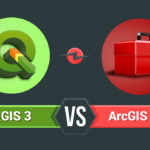

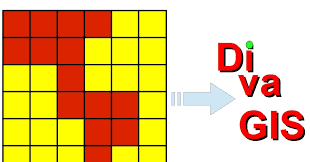










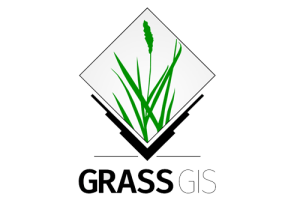


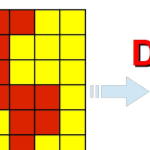






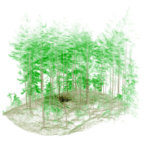













نظرات کاربران